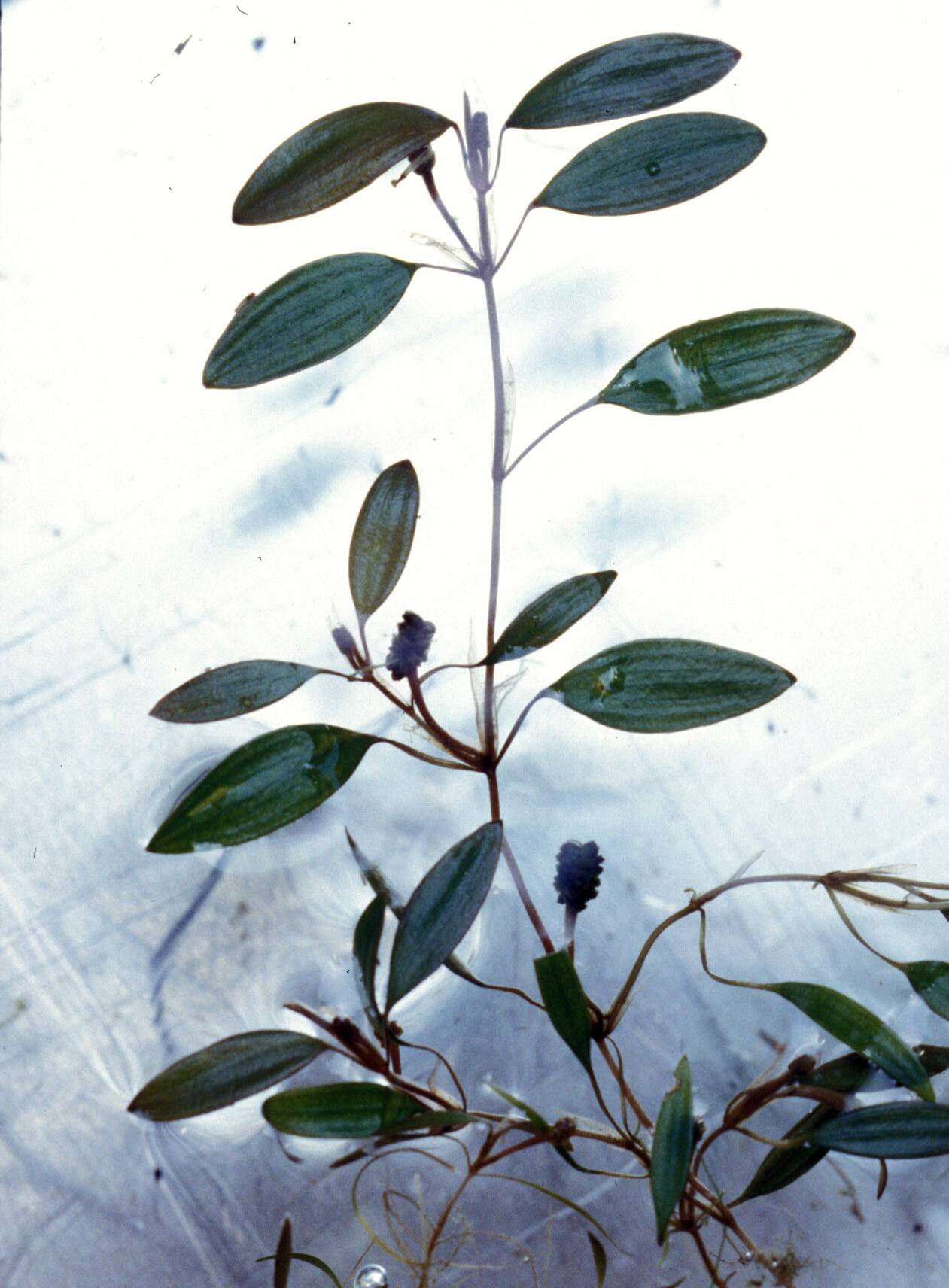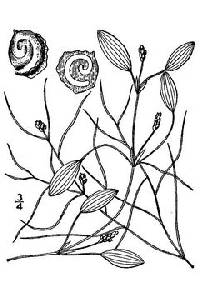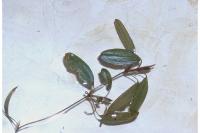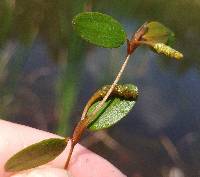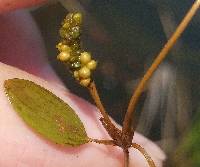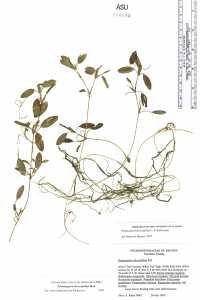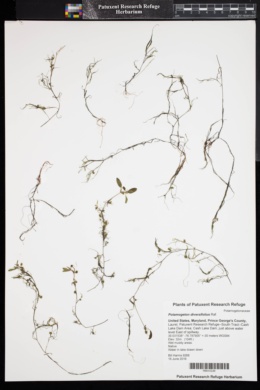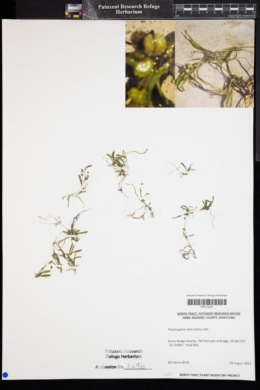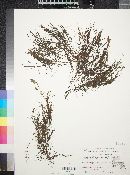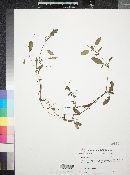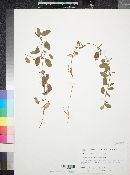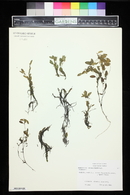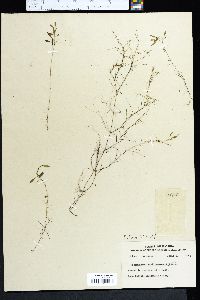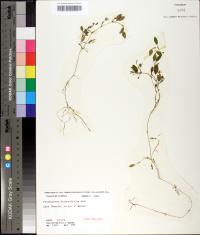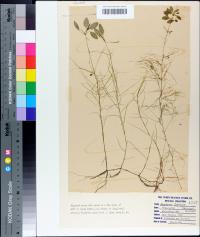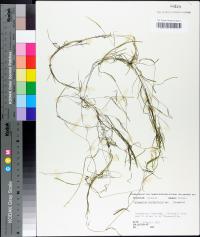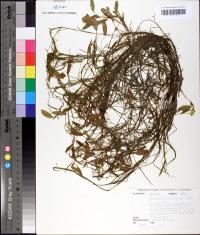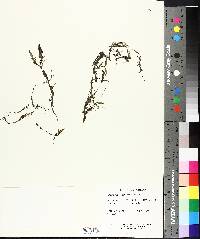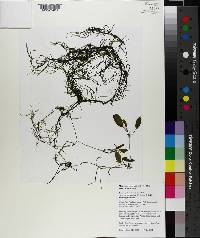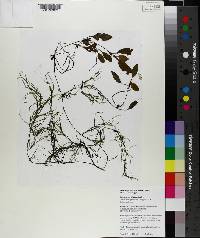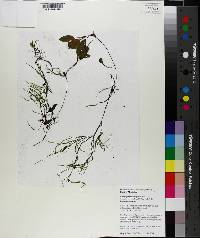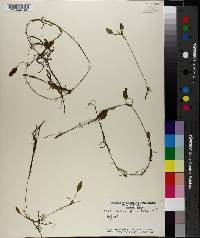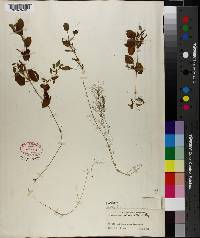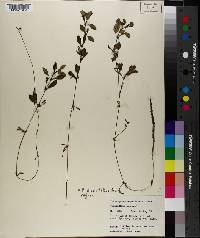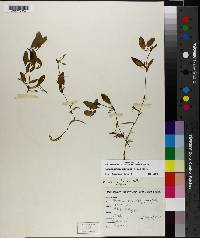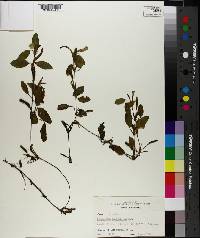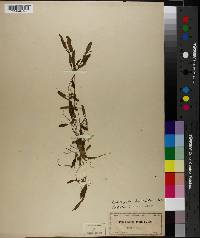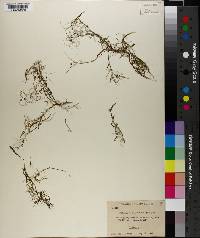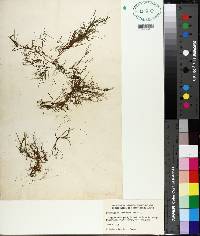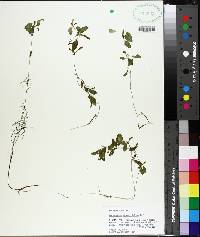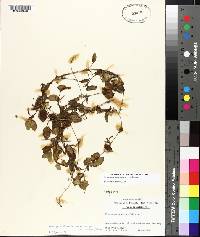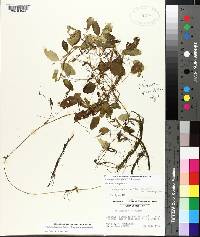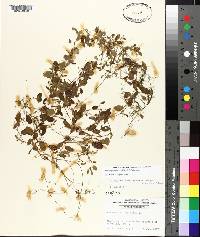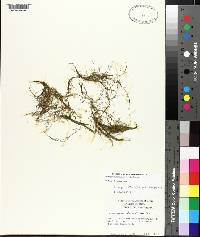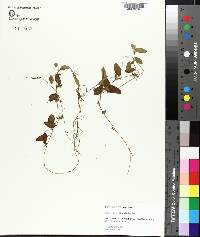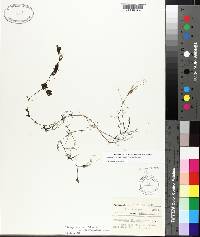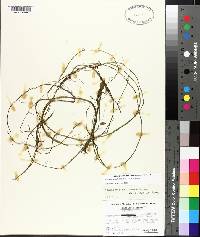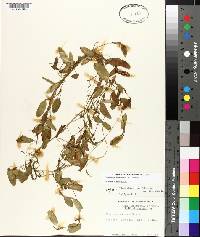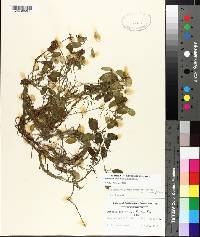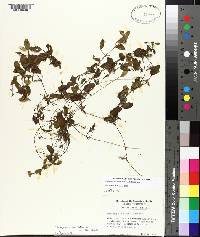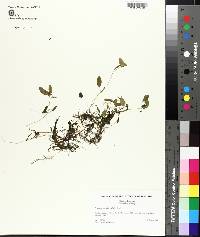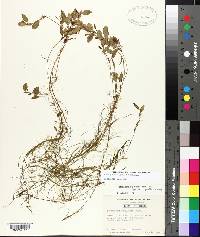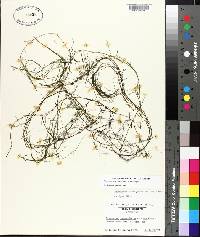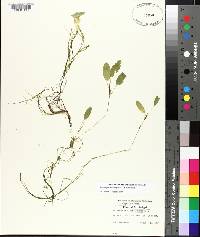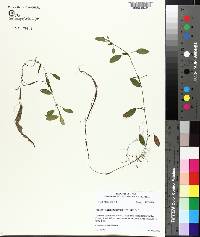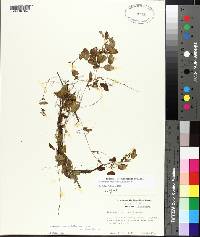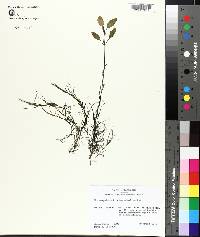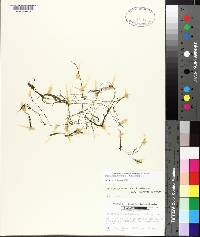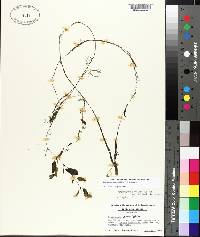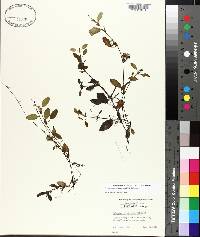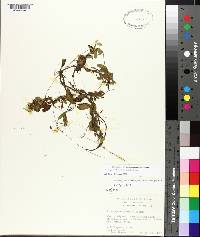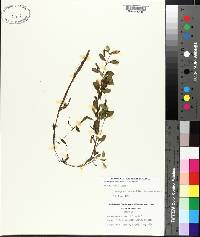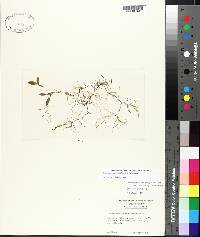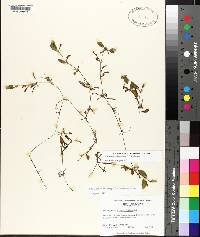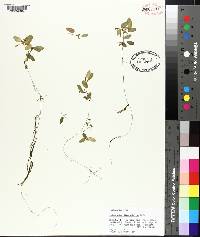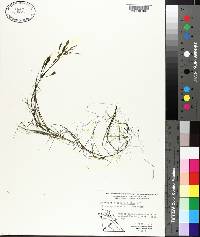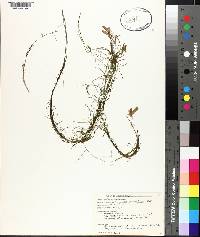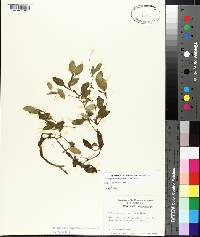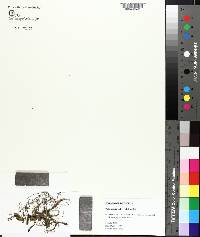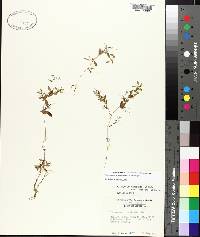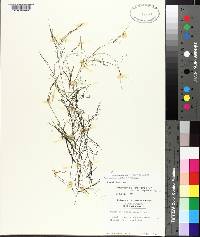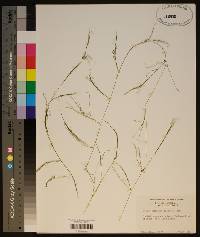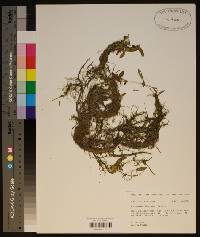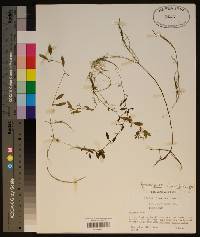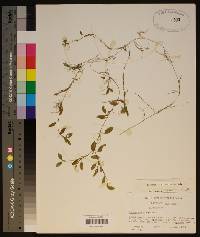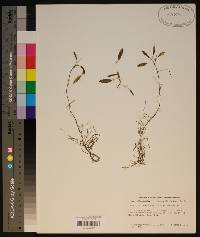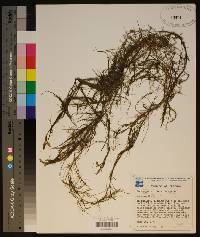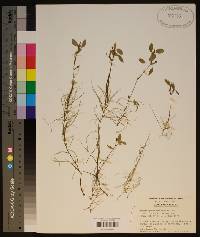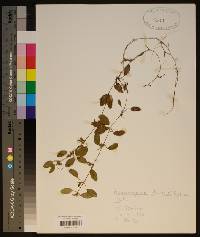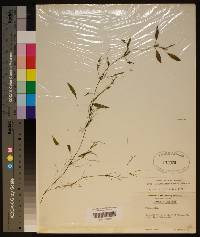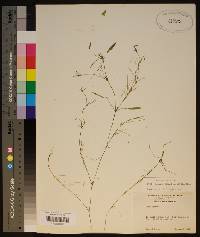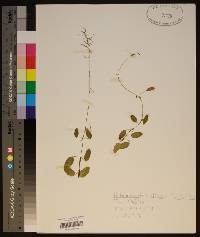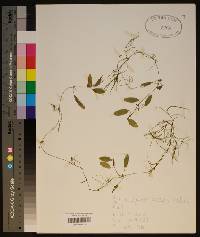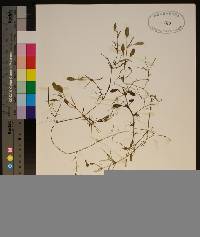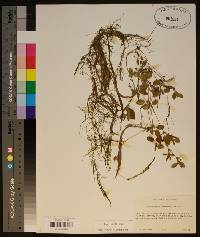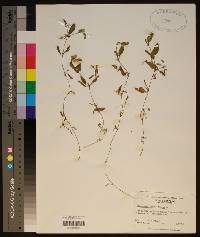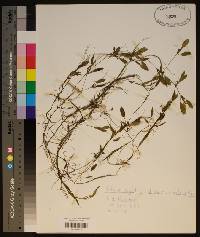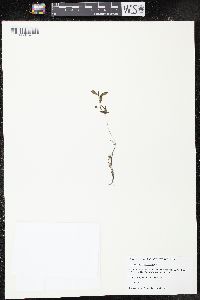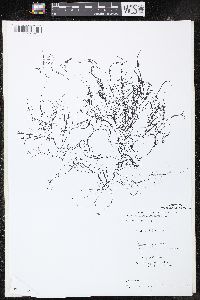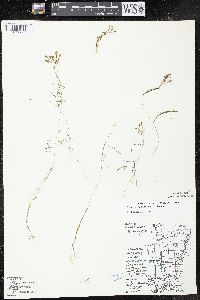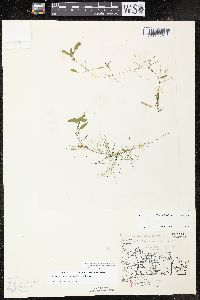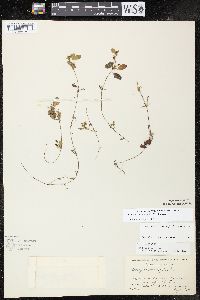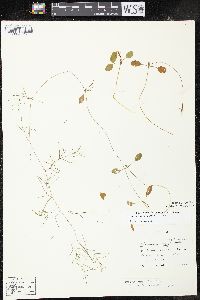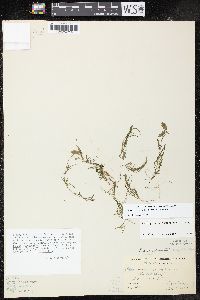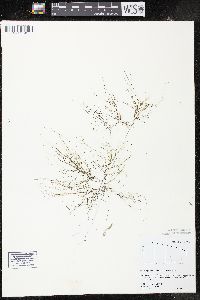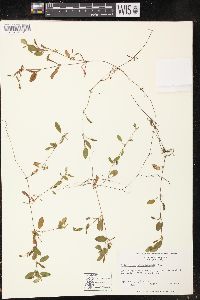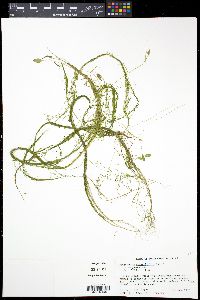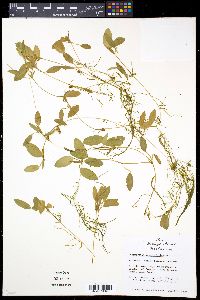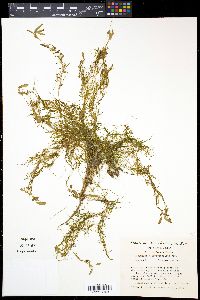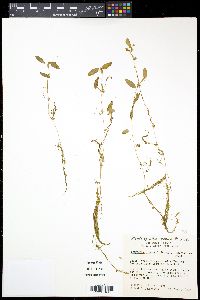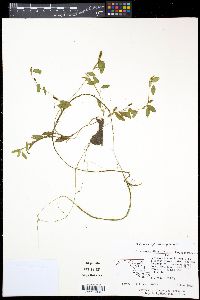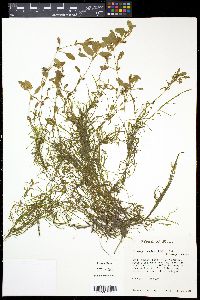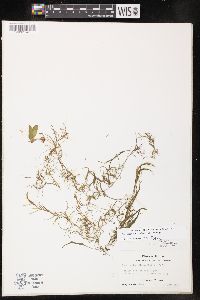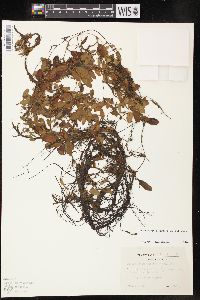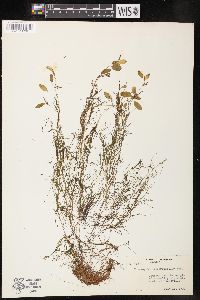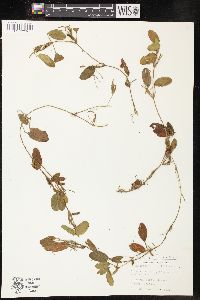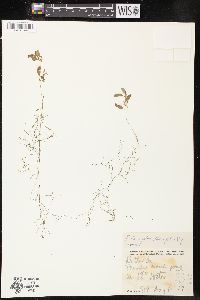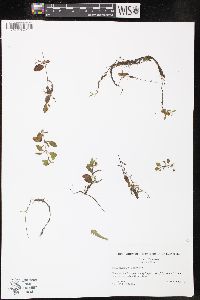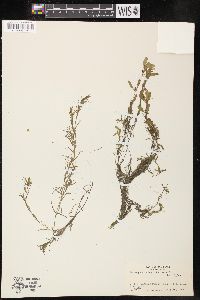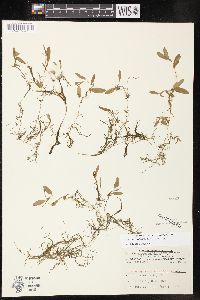
|
|
|
|
Family: Potamogetonaceae
Waterthread, more...waterthread pondweed
[Potamogeton capillaceus Poir. p.p., morePotamogeton capillaceus var. atripes Fern., Potamogeton conjungens , Potamogeton diversifolius var. multidenticulatus (Morong) Aschers. & Graebn., Potamogeton diversifolius var. spicatus Engelm.] |
Rhizomes present. Cauline stems compressed, without spots, 10--35 cm; glands absent. Turions absent. Leaves both submersed and floating or floating absent, ± spirally arranged. Submersed leaves sessile, lax; stipules persistent to deliquescent, inconspicuous, convolute, adnate to blade ½ stipule length, light brown to red-brown, ligulate, 1.5--2.3 cm, not fibrous, not shredding at tip, apex obtuse; blade red-brown to light green, linear, often arcuate, 1--1.3 cm ´ 0.1 mm, base slightly tapering, without basal lobes, not clasping, margins entire, not crispate, apex not hoodlike, acute, lacunae present, 1--2 rows each side midrib; veins 1. Floating leaves petiolate; petioles continuous in color to apex, 0.7--0.8 cm; blade adaxially light green, obovate to elliptic, 0.8--1.6 cm ´ 3--8.5 mm, base acute, apex round to acute; veins 3--7. Inflorescences unbranched; peduncles dimorphic, submersed axillary, recurved, clavate, 3--5 mm, emersed axillary or terminal, erect to slightly recurved, clavate, 6--15 mm; spikes dimorphic, submersed capitate, 2--3 mm, emersed cylindric, 5--9.7 mm. Fruits sessile, greenish brown, orbicular, compressed, abaxially winged, laterally winged, 1--1.5 ´ 0.9--2 mm, lateral wings with sharp points; beak present, erect, 0.1 mm; sides without basal tubercles; embryo with more than 1 full spiral. Flowering and fruiting spring--fall. Ponds, lakes, streams, and rivers; 5--2500 m; Ala., Ariz., Ark., Calif., Colo., Conn., Del., Fla., Ga., Idaho, Ill., Ind., Iowa, Kans., Ky., La., Md., Mass., Minn., Miss., Mo., Mont., Nebr., Nev., N.J., N.Y., N.C., N.Dak., Ohio, Okla., Oreg., Pa., S.C., S.Dak., Tenn., Tex., Vt., Va., W.Va., Wis., Wyo. ; Mexico. Potamogeton diversfolius is very likely the most common species of Potamogeton the genus in the southeastern United States. It has been separated into two species, P. diversifolius in the strict sense and P. capillaceus (M. L. Fernald 1932). The species has also been divided into two varieties, var. diversifolius and var. trichophyllous Morong (D. O S. Correll and M. C. Johnston 1970) . Potamogeton diversifolius var. trichophyllous actually is misapplied, as the name really refers to the more northern P. bicupulatus Fernald. We are following E. J. Klekowski Jr. and E. O. Beal (1965) in accepting only one taxon, as we have studied the species over much of its range and reached similar conclusions.
Perennial submersed aquatic herb with rhizomes 10 - 35 cm tall Inflorescence: an upright, head-like (submersed) or cylindrical (emersed) spike of flowers, submersed or emersed, unbranched, 2 - 10 mm long, on a terminal or axillary stalk. Stalk club-shaped, 3 mm - 1.5 cm long. Flowers: greenish, tiny. Stamens four. Anthers two-chambered, with four edge-to-edge sepal-like outgrowths. Fruit: an achene, stalkless, greenish brown, 1 - 2 mm long, to 2 mm wide, more or less orbicular, compressed, keeled, with a tiny, upright beak. Keels three, often toothed. Stems: clustered, slender, sparsely branched above base, compressed, jointed. Submersed leaves: more or less arranged spirally, stalkless, translucent, reddish brown to light green, 1 - 10 cm long, to 0.5 mm wide, thread-like to linear with a slightly tapering base and a blunt to pointed tip (sometimes bristle-tipped), typically one-veined. Stipules adhered to base of leaf blade to half its length, light brown to reddish brown, rolled up, 2 mm - 1.8 cm long. Floating leaves: (if present) more or less arranged spirally, on a 5 mm - 4 cm long stalk, 0.5 - 4 cm long, 2 mm - 2 cm wide, reverse egg-shaped to elliptic to nearly orbicular with a rounded to pointed base and tip, three- to seventeen-veined, leathery, firmer than submersed leaves. Similar species: The two types of inflorescences help distinguish this species. Potamogeton bicupulatus also has this feature but differs by its beakless fruit, of which the lateral keels are not toothed. Flowering: July to late September Habitat and ecology: Found in shallow water, especially in ponds with sandy bottoms. Occurence in the Chicago region: native Notes: Plants in the genus Potamogeton are very important to wildlife, offering habitat and food for many aquatic animals. Etymology: Potamogeton comes from the Greek words potamos, meaning river, and geiton, meaning neighbor, referring to the habitat of these plants. Diversifolius means "diversely leaved." Author: The Morton Arboretum Stems slender, to 15 dm, clustered, sparsely branched above the base; submersed lvs linear to filiform, 1-10 cm נ0.1-0.5 mm, obtuse to more often acute or even setaceous-tipped, 1(3)-veined, the larger ones with narrow lacunar bands flanking the midvein; stipular sheaths membranous, 2-18 mm, the adnate part mostly shorter than the free tip; floating lvs (not always produced) lance-elliptic to suborbicular, acute to rounded at each end, 5-40 נ2-20 mm, the 3-17 veins strongly impressed beneath, their stipular sheath free from the 5-40 mm petiole; fruiting spikes dimorphic, those axillary to submersed lvs globular to ellipsoid, with 1-15 frs, on ±recurved, slightly clavate peduncles 1-10 mm, those axillary to floating lvs more cylindric, sometimes to 3 cm, with 5-120 frs, on peduncles 3-32 mm; frs compressed, ±orbicular, 1-2 mm, with a minute beak, the entire or toothed dorsal keel usually flanked by a pair of lateral keels that may be represented only by a row of teeth; embryo snail-coiled. Shallow water; Me. to Mont. and Oreg., s. to Fla. and Mex. Two fairly well marked vars. Gleason, Henry A. & Cronquist, Arthur J. 1991. Manual of vascular plants of northeastern United States and adjacent Canada. lxxv + 910 pp. ©The New York Botanical Garden. All rights reserved. Used by permission. From Flora of Indiana (1940) by Charles C. Deam All of my specimens are from the southern half of the state, although it has been reported repeatedly from the dune area. The reports from the northern part of the state should probably be referred to some other species. [Deam includes P. capillaceus in his treatment, which in modern treatments is a synonym of P. diversifolius.] This species was reported by Fernald (Mem. Gray Herb. 3: 111. 1932) as having been found by Hill and by Chase in Goose Pond, near Dune Park, Porter County. This pond is located mostly in section 28 about 4 miles northwest of Porter. …… Indiana Coefficient of Conservatism: C = 4 Wetland Indicator Status: OBL |

